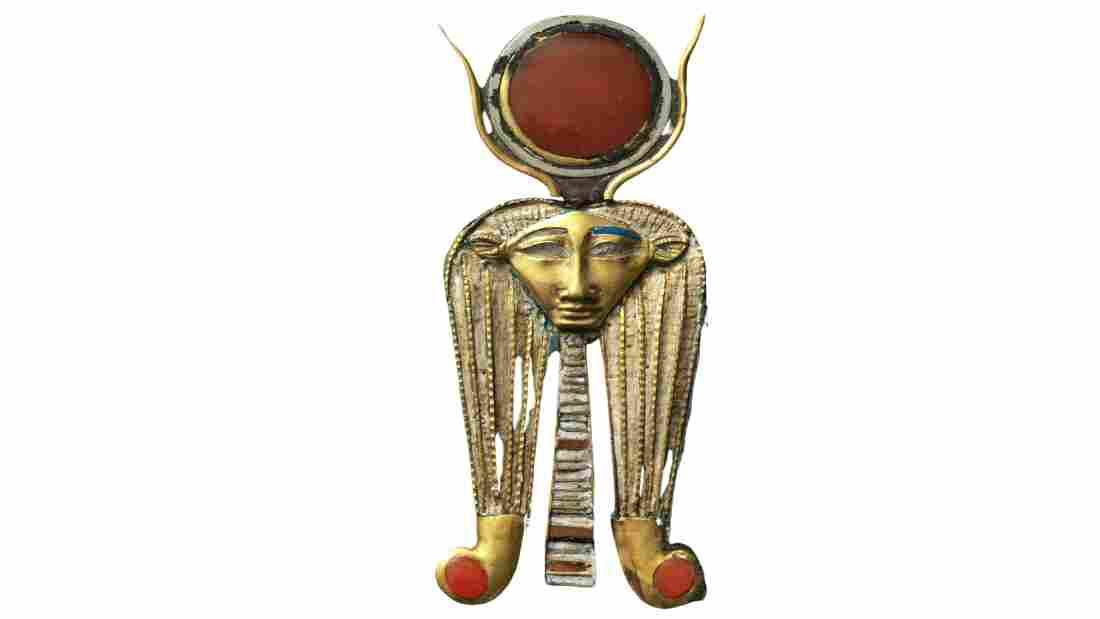Ancient Egypt, a civilization with a rich cultural heritage and an advanced understanding of various sciences, was also known for its exquisite craftsmanship in jewelry making. More than mere adornments, these pieces of jewelry were steeped in symbolism and held significant importance in their society. This blog post will delve into the fascinating world of ancient Egyptian jewelry, exploring its symbolism and significance.
Symbolism in Ancient Egyptian Jewelry
The Egyptians believed that jewelry had magical properties and could provide protection, health, and rejuvenation. Every piece of jewelry was imbued with symbolic meaning, often associated with specific deities or natural elements.

Scarab Amulets
Scarabs, one of the most recognizable symbols from ancient Egypt, were frequently depicted in their jewelry.
These amulets, modeled after the dung beetle or ‘Scarabaeus sacer’, were associated with the sun god Khepri, who was believed to renew the sun every day before rolling it above the horizon, much like a dung beetle rolls a ball of dung across the ground.
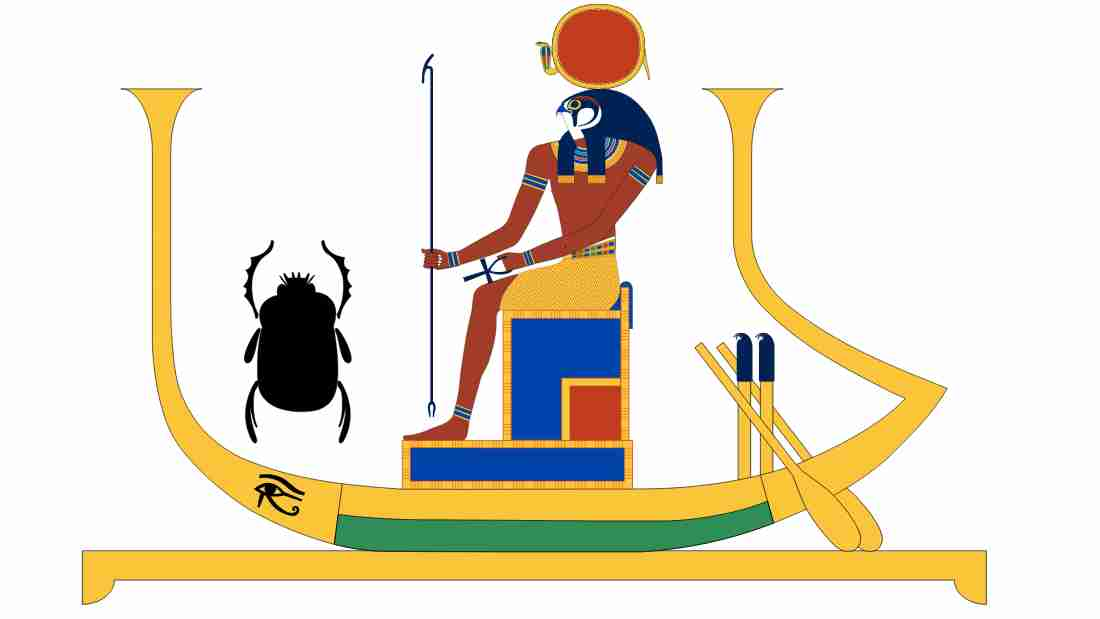
In ancient Egyptian culture, the dung beetle was admired for its seemingly spontaneous acts of creation, and thus, it was linked to the cycle of morning renewal and the idea of rebirth.
Consequently, scarab amulets came to symbolize not just the rising sun, but also the themes of resurrection, transformation, and protection against evil.
Wearing scarab jewelry was thought to imbue the wearer with these powerful regenerative qualities.
The scarabs were often inscribed with spells from the Book of the Dead, further enhancing their protective properties. They were worn as necklaces, bracelets, or rings and were even used in seals.
Furthermore, larger heart scarabs were placed on the chest of the deceased during mummification, to replace the heart that was removed during the process.
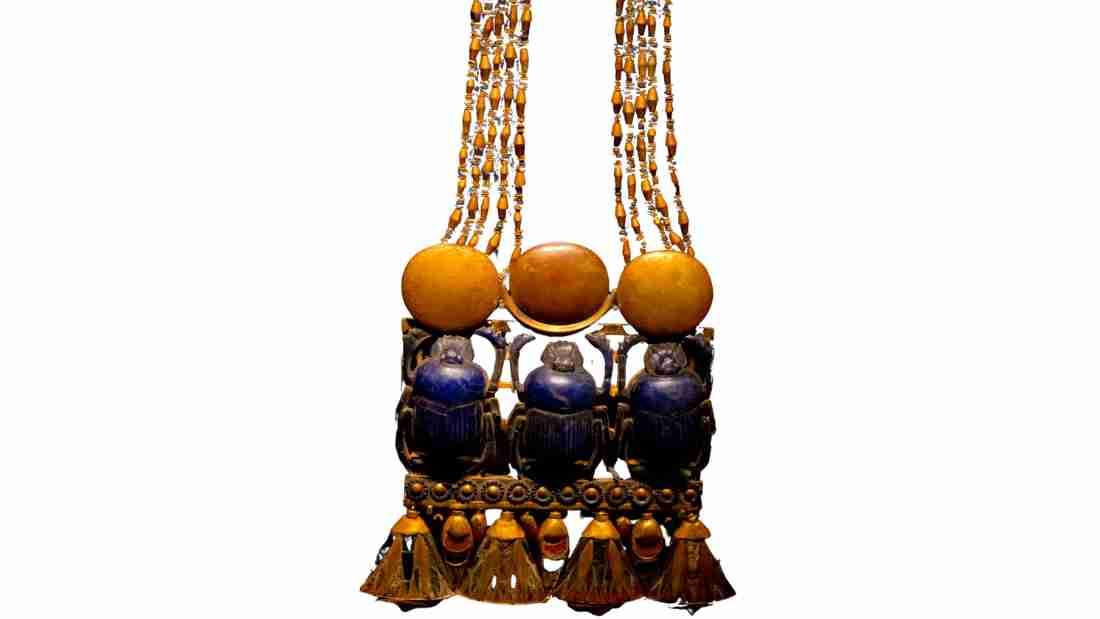
This ritualistic use underscores the deep spiritual significance of scarab jewelry and its central role in ancient Egyptian beliefs about life, death, and the afterlife.
Thus, the fascination with scarabs in ancient Egyptian jewelry goes beyond their physical representation. They were viewed as potent symbols of the cyclical nature of life, carriers of protective spells, and vital components in the journey to the afterlife.
Their enduring appeal continues today, with modern jewelry often incorporating scarab motifs, paying homage to the rich symbolic heritage of ancient Egypt.
The Ankh – The Key of Life
The Ankh, an iconic motif in ancient Egyptian culture, is a symbol that transcends time. Also referred to as ‘the key of life’ or ‘the cross of life’, this hieroglyphic sign, resembling a cross with a looped handle, has profound and multifaceted significance in ancient Egypt.

The Ankh was frequently depicted in the hands of Egyptian deities, specifically those associated with life and death, underscoring its central role in the divine realm.
When held by a god or goddess, it signified their authority to bestow life upon the mortal world. It was often shown being offered to the king’s lips as a symbol of the ‘breath of life’ needed for his spiritual transition into the afterlife.
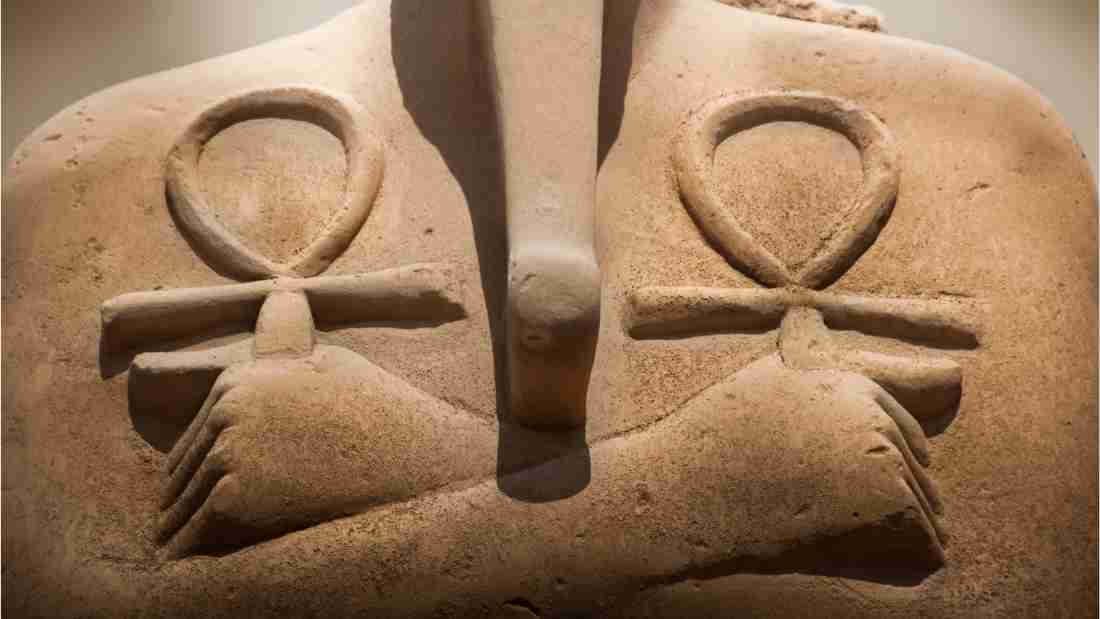
As a piece of jewelry, the Ankh served more than ornamental purposes. Egyptians wore it as an amulet, believing that it would confer upon them divine protection and eternal life.
The Ankh was also thought to ensure a safe passage into the afterlife, making it a common feature in funerary art and tomb decorations.
In terms of design, Ankhs were crafted from a variety of materials, ranging from precious metals like gold and silver for the elite, to affordable materials like faience and pottery for the general populace. Sometimes, they were even adorned with gemstones to enhance their aesthetic appeal and symbolic power.
The Ankh’s distinctive form has made it a popular motif in jewelry, even in modern times. Today, it is often worn as a symbol of life, spiritual wisdom, and physical and mental health. Its enduring popularity underscores the profundity of ancient Egyptian beliefs and the timeless appeal of their symbolic language.
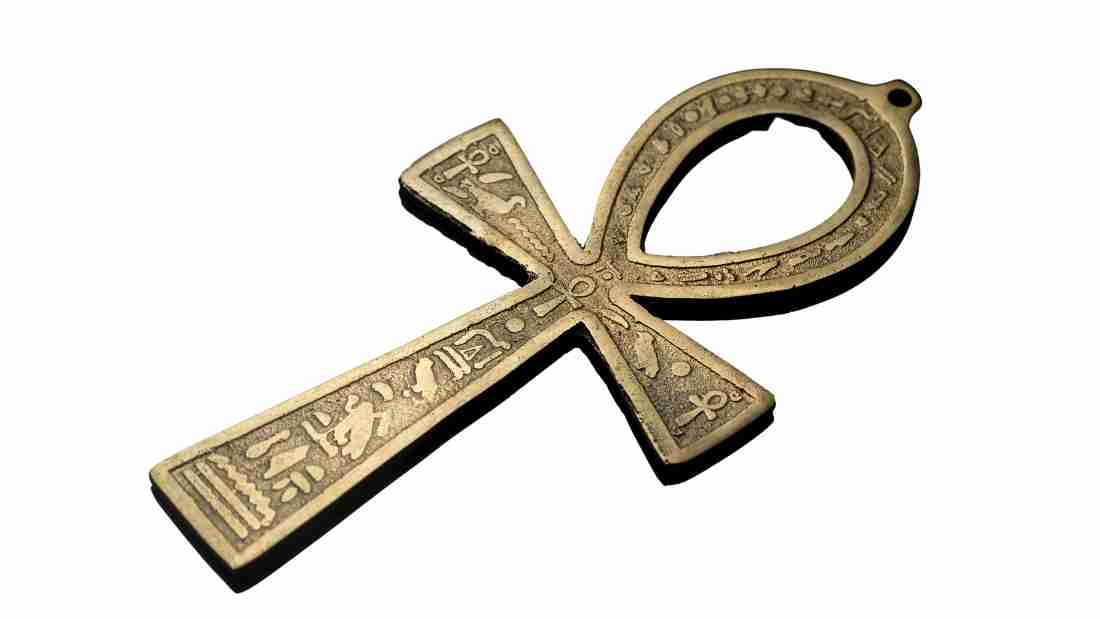
Thus, the Ankh’s role in ancient Egyptian jewelry extends beyond mere adornment. It is a potent emblem of life, divine protection, and eternity, deeply rooted in the spiritual beliefs and practices of the time. Its presence in modern jewelry continues to echo these powerful associations, offering a tangible connection to the rich cultural heritage of ancient Egypt.
Significance of Materials and Colors
The materials and colors used in ancient Egyptian jewelry also held significant meanings. Gold, considered the flesh of the gods, was the most prevalent metal, symbolizing eternal life and status. Silver, although rarer, represented the moon.
Different gemstones and colored glass were used not just for their aesthetic appeal, but also for their symbolic associations. For example, green malachite represented new life and growth, while red carnelian was a symbol of vitality and energy.
Jewelry as Status Symbols
Jewelry in ancient Egypt also served as a status symbol. The quantity and quality of one’s jewelry were indicative of their social standing. Pharaohs and nobles wore elaborate pieces crafted from precious metals and gemstones, while commoners wore simpler pieces made from less valuable materials.
Moreover, jewelry was an essential part of burial customs. Egyptians were often buried with their jewelry, as they believed these items would prove useful in the afterlife. Some of the most famous pieces of ancient Egyptian jewelry, such as Tutankhamun’s death mask, have been discovered in tombs.

Conclusion
The ancient Egyptians’ intricate relationship with their jewelry goes beyond physical adornment.
Each piece served as a talisman, a status symbol, and a link to the divine, providing us with a deeper understanding of their culture and beliefs.
Today, the influence of ancient Egyptian jewelry continues to be seen in modern jewelry designs, reminding us of a civilization that saw beauty and meaning in every facet of life.

Frequently Asked Questions About Ancient Egyptian Jewelry
Ancient Egyptian jewelry was made from a variety of materials. Precious metals like gold and silver were commonly used, along with semi-precious stones such as lapis lazuli, carnelian, turquoise, and malachite. They also used materials like faience, a type of ceramic, and colored glass.
Symbols in ancient Egyptian jewelry often had religious or magical significance. For example, the Ankh symbolized life and immortality, while the Scarab beetle represented rebirth and transformation. These symbols were believed to confer protection and other benefits to the wearer.
The quantity and quality of one’s jewelry were indicative of their social standing in ancient Egypt. Pharaohs and nobles wore elaborate pieces made from precious metals and gemstones, while commoners wore simpler pieces made from less valuable materials.
Jewelry was an essential part of burial customs in ancient Egypt. Egyptians believed that these adornments would prove useful in the afterlife. That’s why many tombs, including that of Tutankhamun, contained a wealth of jewelry.
One of the most famous pieces of ancient Egyptian jewelry is the death mask of Tutankhamun. This mask, made of solid gold and adorned with colored glass and semi-precious stones, is an iconic artifact of ancient Egypt.
For Further Reading
Large Stockpile of Embalming Equipment discovered in Abusir
Mummification: Why did the Ancient Egyptians embalm their dead?
Saba Mahmood – a strong voice in the anthropology of religion and post-colonialism
Unravelling the Mysteries of Ancient Egyptian Symbols of Death – Anthropology Review
The Wrath of Montu – The Mythology of the Egyptian War God
Exploring the Egyptian Middle Kingdom – A Historical Overview
Examining the Rich Hues of Ancient Egyptian Paint
Ancient Egyptian Temples: Spiritual Centers of the Nile Civilization
The Symbolism and Significance of Ancient Egyptian Jewelry
The Pantheon of Ancient Egyptian Gods – A Comprehensive Guide
Temple of Seti I: An Architectural Marvel in the Ancient City of Abydos

